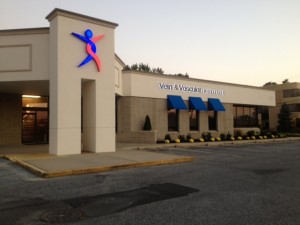Are you one of the 35 percent of Americans who suffer from chronic venous insufficiency (CVI)? Not sure? That’s not uncommon – according to the Vascular Disease Foundation, many people who suffer from CVI don’t even know it, despite the fact that they may be experiencing at least one of its symptoms. The condition itself affects tens of millions of men and women, and occurs when the normal, healthy blood flow in our arms and legs – most commonly the legs – becomes impaired. How does that happen? Over time and as our bodies respond to age and health or lifestyle issues – even our genetics – the walls of our blood vessels can become stretched and weakened. At the same time, the tiny valves that are inside our veins that normally help keep blood flowing the right direction also become weak or damaged. The result: Impaired blood flow.
The problems associated with CVI tend to occur more in the legs because they’re subjected to tremendous pressures all day long as they support the rest of us while standing, walking, running and exercising. They’re also frequently positioned below our heart, which means pumping blood back to the heart takes more work. And our feet are located at the farthest points from our heart, so blood has to travel the farthest to get to our feet and back to the heart.
The most common symptom of CVI is the development of varicose veins, those purplish, bulging and, let’s face it, ugly veins that occur most commonly on the legs and feet. But the fact is, the problems of CVI begin manifesting long before those first varicose veins show up. Unfortunately, the earlier symptoms of CVI can be difficult to recognize as symptoms, and they can also frequently be overlooked or misdiagnosed as something else.
To make sure you get the vein treatment you need to keep your circulatory system as healthy as it should be, it can help to recognize these symptoms yourself, and then to get medical treatment when you notice these symptoms. So to help you in that goal, here’s a list of the most common symptoms you may experience in the early stages of CVI:
you need to keep your circulatory system as healthy as it should be, it can help to recognize these symptoms yourself, and then to get medical treatment when you notice these symptoms. So to help you in that goal, here’s a list of the most common symptoms you may experience in the early stages of CVI:
- Pain, burning, numbness, cramping or stinging in the legs and feet, which can range from mild discomfort to out and out pain or stinging like the impact of a rubber band
- Swelling in the ankles, feet or legs that occurs as circulation slows and fluid builds up more easily
- Restless leg syndrome, that uncontrollable urge to move your legs that most commonly occurs when we’re trying to sleep
- Feelings of heaviness, weakness or tiredness in the legs that may impede our ability to walk for long periods of time
If you’re experiencing any of these symptoms, don’t delay: Call our vein clinic today and schedule an evaluation to learn if you’re suffering from CVI.
